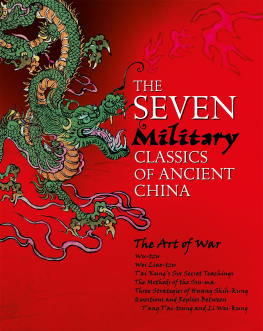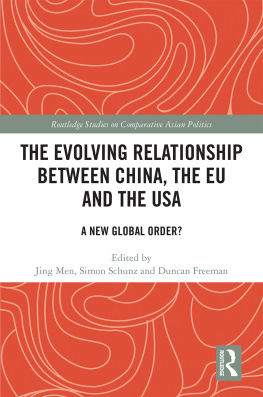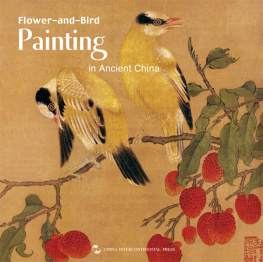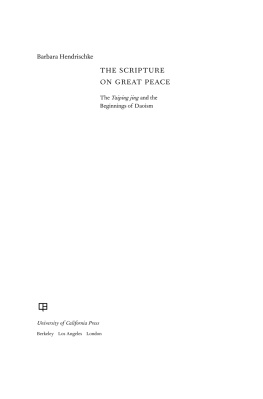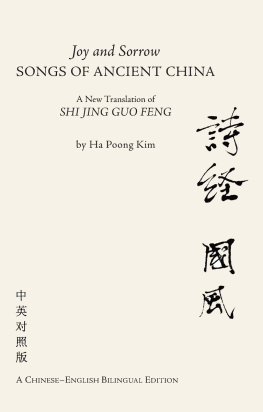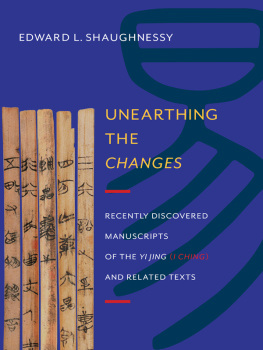
Book of the Five Talismans w f jng
( Taishang lingbao wufu jin g )
When I read the translation of five scrolls of the Du Ren Jing, the "scripture of Boundless Universal Salvation" by Norman Goundry on
http://www.dztranslation.org/texts/vol-0005/daozang-0005-content.html
and began learning about LingBao Daoism, I was left with several questions that the internet couldn't answer who was the White Emperor, and what was his significance?, what is the Yellow River Map and where did it come from? and other origin stories from the LingBao tradition.
Fascinated by the mystic LingBao vision, I found Book 388 of the Taoist Canon on the web at ctext.org,
http://ctext.org/library.pl?if=gb&file=99014&page=4
and as I translated it, it answered many of my questions, and also rounded out my understanding of the LingBao vision. It is sometimes called Book of the Five Talismans; it begins with a prologue explaining the flood story of Ancient China in all its beauty and complexity, and goes on to list several mystical practices that were assumed and expanded upon in the Du Ren Jing.
This document is the whole thing with Chinese characters and pinyin; just like the Buddhists like to chant, some Daoists like to write out the characters from the scriptures, as I tend to do, and this is where I get some of what I write out. On my website www.translate-the-dz.com I encourage others to collaborate in the translation project that could be expanded to many other parts of the Daoist canon.
I've been enjoying the perspective of "Ling Bao" Daoism - Ling is the character - ( ) that is often translated "spirit" or soul, but looking into the components of it, a fuller meaning might be " the numinous power in the wind and the rain beating against the thatched windows and in the dance of the shaman"; Bao is the character ( ) and means "precious, treasure". The vision of LingBao finds divinity from "anterior heaven", from before the time that Heaven and Earth became separate, the universal salvation, in the wind and rain and light, the natural universe that revolves in the sky above us a giant talisman to ferry us into that salvation; The Wu fu Jing is a fundamental text of LingBao Daoism, from the mid to late 400's; at the end of the third scroll are the five talismans, and an in-depth conversation between the Yellow Emperor and the "Three Ones", a chief divinity of the Dao from beyond; along the way are several foundational stories of Daoism and Chinese culture, and a growing and weaving of the mystical vision, the immortal perspective on the world all around us, and the hoped for escape from the netherworld of the human mind.
The Taoist canon- the "DaoZang" - is comprised of 1500 scriptures or "books" altogether, some much longer than others, this being one of the longer ones.
Book 388 is foundational to LingBao Daoism; it's the answers to things I found in Norman's book 5, that I was surprised to discover were unanswerable on google - the white emperor, the yellow river map, etc.
Scroll 1 is the story of the flood, and the back story the where such a thing as this scripture came from.
Scroll 2 is mostly recipes, the recipes of the perfected. It's a meditation, making me see the universe in the seeds and roots and stems and flowers and leaves, making me appreciate the changing seasons of wholeness; " for the man perfected into truth, his prescriptions are a precious treasure, from the senior Daoist scholars of his medicine". Most of the recipes have a section where they describe what will happen if you take the medicine for one hundred days, two hundred days, three hundred days, a thousand days, two thousand days, five thousand days and it's in these descriptions of the day to day reality of an immortal that I find the gems that become my personal prayers; maybe my favorite in scroll two is this - "sailing in the peace like the stars, the vitality of the body like a bright ray, eyes illuminating day and night, the bright ray closing off like a beam or a bridge, body crossing through the knots of festivals and holidays lightly and easily, life floating forward like the lines of a scripture, like the paths of the stars, wise in the revolving vehicle; even without feathers or wings, the thoughts fly above the passions and wishes of the world";
shn shng gung mng m zho zhu y yu gung gun ling jio ji qng shn su w y y y y fi xng.
Scroll 3 is the pinnacle, slowly built up and like nothing I've ever read. With my words i tried to convey beauty, but as i look back, there's no way to fully convey the beauty of the scripture in the original Chinese, and so once I've processed it philosophically and have a feel for what it means, I find myself staring at the characters. At it's core are five walls, behind those walls is ... spirit, the universe... the scripture is a riddle that solves itself. It's a story by the universe, about the universe, for the universe. A book that contains infinity and confers immortality; it's writings from the immortal perspective, the perspective of the universe, immortal in the ancient dream; its a perspective from beyond the three borders of Past, Present, and Future, the perspective of Brahman, who in this docment is simply called the "One"; In the Du Ren Jing, the "Scripture of Boundless Universal Salvation", they use the character for "Brahman", but here it's just the character for the number "one", just a horizontal line.
Occasionally there were terms like the "six harmonies", the "eight Qi", the "nine virtues", or the "five labors and the seven injuries", and I looked these up, in some cases doing my own translation, and I found these to be insightful additions to the overall ideas I included them here. When it comes to the actual recipes, I used the measurements provided, instead of converting them, because I wanted to contemplate the proportions the way the authors intended them, but for practical purposes I left a translation table of the various measurements at the end of scroll two. The recipes in Scroll two are a key piece of the overall story, only briefly hinted at in the first scroll, but a prerequisite to scroll 3, to understand a fundamental component of the life that Yu the Great lived when he created the five talismans. In a full copy of both scroll one and two, available on my website http://translate-the-dz.com, I have pasted all the pinyin and traditional characters, the easier for you to copy and paste any of them into the internet for further research; I really do think that translating the DaoZang should be a collaborative effort, I'm just trying to kickstart it. I leave the rest of the work to you, and the world. Meanwhile I gobble down the very best, engulfed in the Keith Dowman translations of 8th century Tibetan Dzogchen,
https://www.amazon.com/Everything-Light-Circle-Total-Illumination/dp/1543035566/ref=sr_1_1?s=books&ie=UTF8&qid=1515696585&sr=1-1&keywords=keith+dowman+everything+is+light
also Christopher Wilkinson's work, for instance this one -
https://www.amazon.com/Pearl-Necklace-Tantra-Instructions-Perfection-ebook/dp/B01N69MAJF/ref=asap_bc?ie=UTF8
and another fifth century Chinese scripture that is wonderfully translated in a book called the "Declarations of the Perfected",
https://www.amazon.com/Declarations-Perfected-Setting-Scripts-Imaegs/dp/1931483817/ref=sr_1_1?s=digitaltext&ie=UTF8&qid=1515696718&sr=8-1&keywords=declarations+of+the+perfected
and if you are interested in this general topic, eastern mysticism, I offer only the very highest recommendation for these, in addition to the Hindu Upanishads, all 108 of them if you can dig them up out of a research library; for those I recommend finding atleast two translations for your favorite of them, but after that you've pretty much got it, Sanskrit is as precise as English and German, and you can trust the translators; Chinese is more of a mystic's pursuit, each translation is different, I like to say it's like sending a hundred priests through a catholic church to look at the stations of the cross pictures, and then write the story; of course no two will be the same, even though the story will be recognizable in all, and you will of course have to pick the translation that resonates the best for you.
Next page

